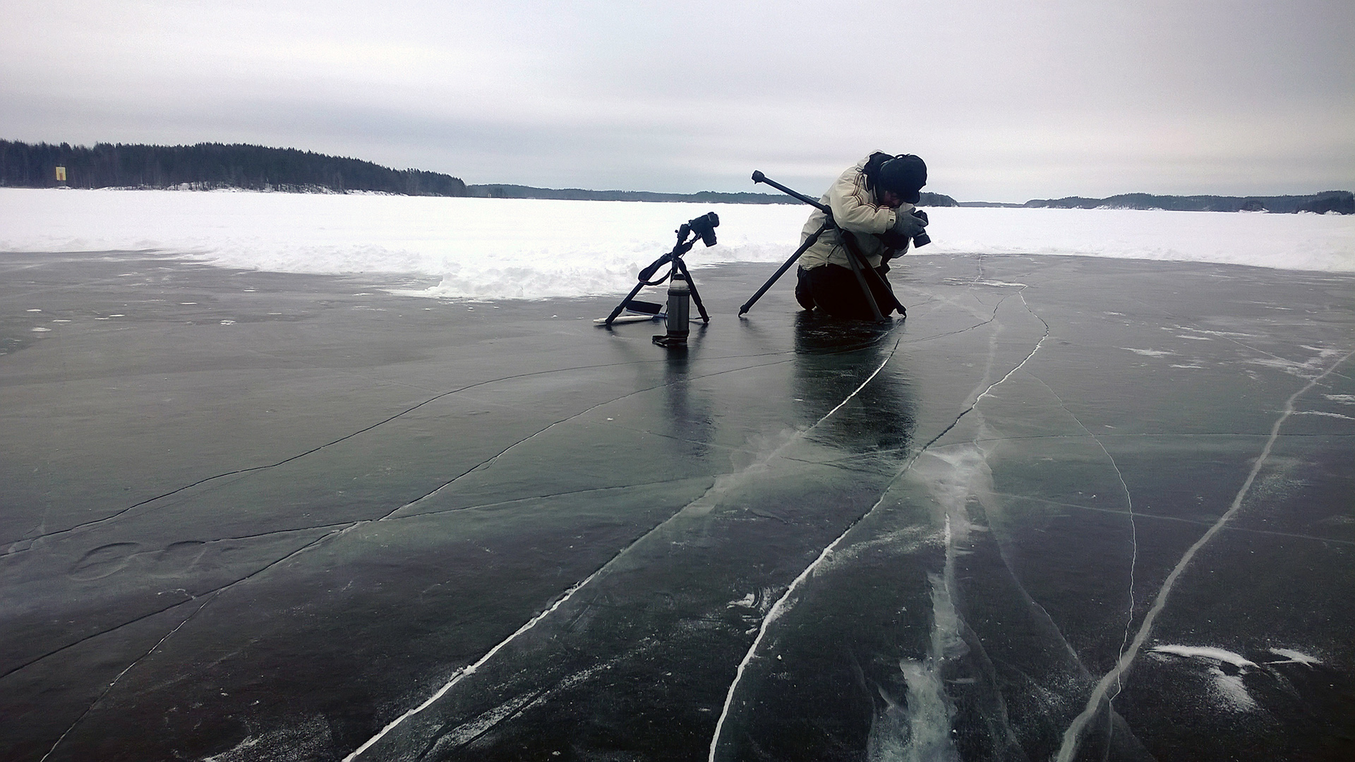The Finnish art historian Katve-Kaisa Kontturi (2012, 31) has said that the perception of material movement requires a sensuous proximity or active following—some kind of flexible presence, participation. The bodily aspect is recognised by sensory attention, analysing what kind of information the activities on ice produce. My experiences and memories working on ice and with ice are also stored in my bodily memory. Via this bodily memory, I have multisensory knowledge of ice and the place. The place is marked in my mind as a mental map that is living and transforming all the time. Along this process, the understanding of the place and its situation in the centre–periphery dichotomy is floating constantly.
Maurice Merleau-Ponty (1945/2003) has stated that corporality fixes us in time and place. The body anchors us in the world and mediates the universe. Thus, we are in a dynamic relationship with the world. The physical scheme—that is, the physical know how—controls how we attach to the world. However, even this scheme will change over the time. Just as the body changes with new experiences, so does the body’s orientation with the world.
Walking on the ice is a multi-sensory event. It requires participation in places with all senses. It is a physical movement, but it also connects the body and mind, and at the same time, integrates the human into the place (Ingold 2004, 328–329). Movement makes everthing visible, contantly change its shape (Närhinen 2016,179).
Dance artist and theorist Rudolf von Laban (1966, 10) has created the concept of the kinesphere to describe the ‘space which can be reached by easily extended limbs’. The kinesphere connotes to the lived space, where the local and experienced knowledge of the place form the basic attitude to the place (Parviainen 2016, 64). The choreography researcher Jaana Parviainen (2016, 64) has noticed that to ‘understand human movement in all its complexity, it is not enough to focus on physical bodily motion within the kinesphere but also to the inner movements of the body. If the kinesphere is the lived space that can be reached easily by extended limbs, innesphere concerns the internal space that can be reached under the skin. The skin should not be understood as a boundary between the kinesphere and the innesphere but rather as an interface that binds together inner bodily feelings and outer perception.´
The views of Merleau-Ponty, Laban and Parviainen’s on bodily experience are seen in architect Juhani Pallasmaa’s observation that our technological culture has ordered and separated the senses. Vision and hearing have become the privileged sociable senses, whereas the others are considered archaic sensory remnants ‘with merely private function, and they are usually suppressed by the code of culture’ (Pallasmaa 2012, 18). The multisensory reading of the environment considers that the other senses are as important as the dominant ones are. Anchoring multisensoriness in the place, our body mediates information from the kinesphere and innesphere.
